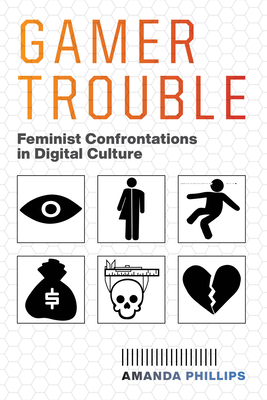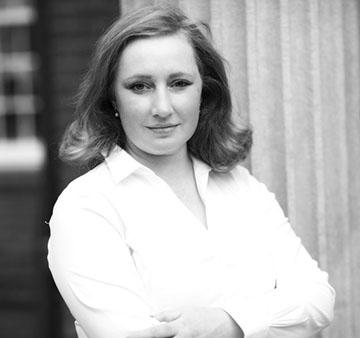

 New York University Press
New York University Press
Gamer Trouble: Feminist Confrontations in Digital Culture


Key Metrics
- Amanda Phillips
- New York University Press
- Hardcover
- 9781479870103
- 9 X 6 X 0.69 inches
- 1.12 pounds
- Social Science > Media Studies
- English
 Secure Transaction
Secure TransactionBook Description
Complicating perspectives on diversity in video games
Gamers have been troublemakers as long as games have existed. As our popular understanding of gamer shifts beyond its historical construction as a white, straight, adolescent, cisgender male, the troubles that emerge both confirm and challenge our understanding of identity politics. In Gamer Trouble, Amanda Phillips excavates the turbulent relationships between surface and depth in contemporary gaming culture, taking readers under the hood of the mechanisms of video games in order to understand the ways that difference gets baked into its technological, ludic, ideological, and social systems.
By centering the insights of queer and women of color feminisms in readings of online harassment campaigns, industry animation practices, and popular video games like Portal and Mass Effect, Phillips adds essential analytical tools to our conversations about video games. She embraces the trouble that attends disciplinary crossroads, linking the violent hate speech of trolls and the representational practices marginalizing people of color, women, and queers in entertainment media to the dehumanizing logic undergirding computation and the optimization strategies of gameplay. From the microcosmic level of electricity and flicks of a thumb to the grand stages of identity politics and global capitalism, wherever gamers find themselves, gamer trouble follows. As reinvigorated forms of racism, sexism, and homophobia thrive in games and gaming communities, Phillips follows the lead of those who have been making good trouble all along, agitating for a better world.
Author Bio
I am Associate Professor of Islamic Art and Material Culture, having joined the Department of Art in 2015 as Assistant Professor after positions at the University of Birmingham and the Museum of Islamic Art in Berlin. My first book, Everyday Luxuries, was published with the National Museums of Germany in 2016; it explored the circulation of art and objects in the Ottoman capital of Istanbul in the years between 1600 and 1800. The book argued, among other things, that the consumption habits of men and women in Istanbul drove the production of textiles, ceramics, metalware, woodwork, and other crafts, as well as the arts of the book. While these categories of objects form the bulk of many museum collections, they are often neglected by both scholars and curators. Everyday Luxuries proposed new ways of seeing, studying, and exhibiting them, also moving Islamic art history beyond its traditional focus on the uppermost elites.
My second monograph, Sea Change, published in 2021 with the University of California Press, explored Ottoman textiles from both a global and interdisciplinary perspective, uniting the eastern Mediterranean with the Indian Ocean on one hand, and social and economic history with art history, technical studies, and global history on the other. It also insists on a more comprehensive history of textiles, arguing that the plain, the non-canonical, the well-worn, and the downright mediocre are necessary parts of an expanded topography, and deserve treatment on their own terms. Artisans made decisions as the worked, and the book also returns agency to the men and women earning their livings in the textile sector. It shows how they coped with economic hardship and technological change, as well as how they resisted regulations imposed by the central authorities.
As an active researcher whose scholarship relies on close analysis of objects, I continue to work in museums across the US, Europe, and the Middle East, with occasional visits to South and East Asia. Using collections in Greece, Turkey, the UK, and the US, my third project will focus on the global language of flowers in the golden age of botany, as seen in textiles and other crafts. It will draw a through-line from the high arts and literature of the Ottoman court to vernacular modes of decoration, with a focus on textiles made and used by women.
My research has been supported by the Fulbright Commission, the National Endowment for the Humanities, the Max Planck and Marie Curie Foundations, the Gerda Henkel Stiftung, the British Academy, the Barakat Trust for Islamic Art, the Calouste Gulbenkian Museum in Lisbon, the Pasold Foundation for Textile Research, the Clarendon Bursary at the University of Oxford, and the Doris Duke Foundation for Islamic Art in Honolulu, among other sponsors.
At UVa, I am Affiliated Faculty at the Department of Middle Eastern and South Asian Languages and Cultures and the director of Diversity, Equity, and Inclusion at the Department of Art, and am currently teaching in the College Fellows Program, part of the Engagements curriculum for first year undergraduates. I continue to offer a comprehensive history of the art and architecture of the Islamic world in the spring of each year and occasionally advise Distinguished Major’s Papers. Students interested in graduate study of the material culture of the Islamic world, and the Ottoman Empire especially, are invited to email me to discuss admission to the doctoral program in Art and Architectural History.
Source: University of Virginia Arts & Sciences
Videos
No Videos
Community reviews
Write a ReviewNo Community reviews